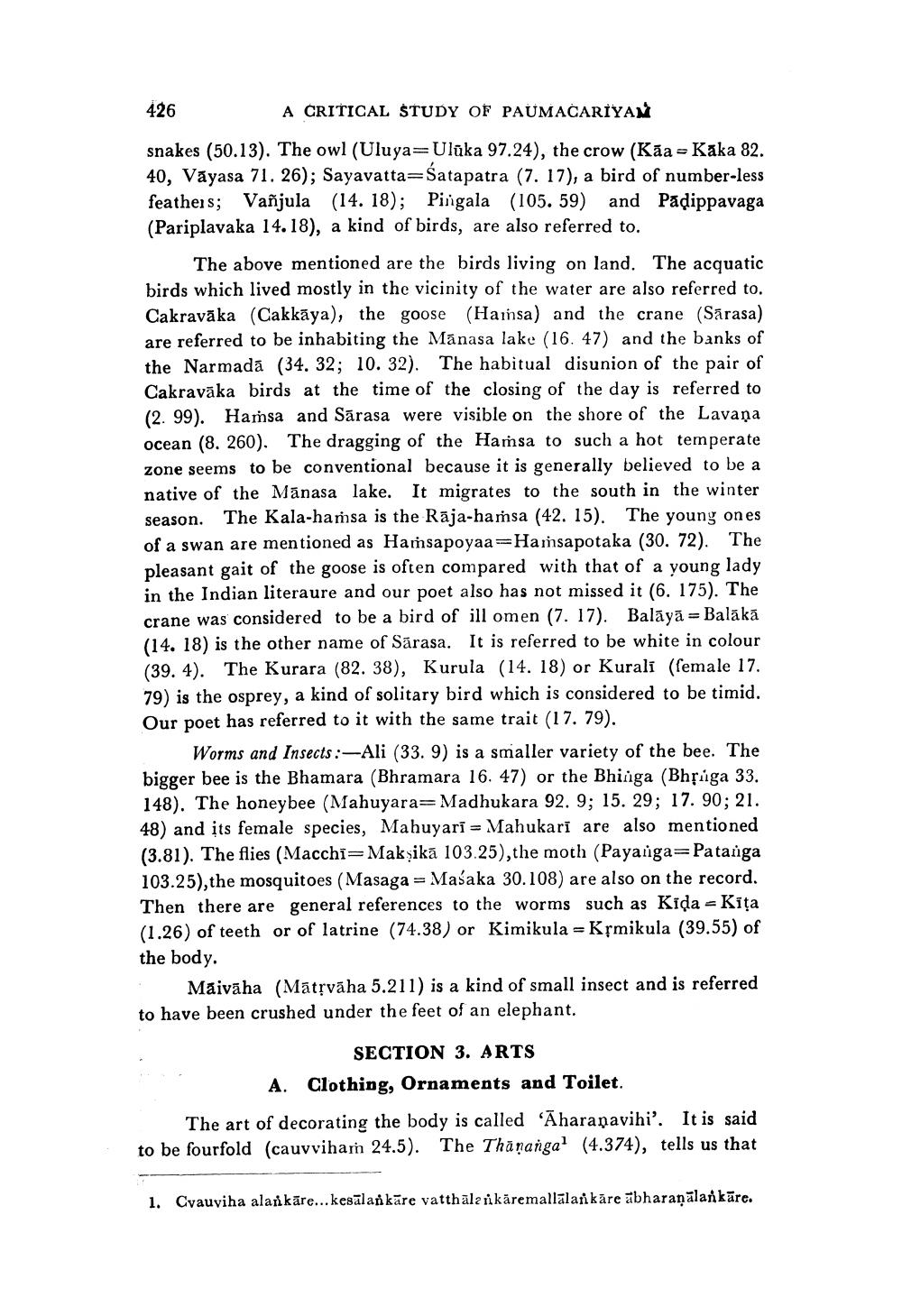________________
426
A CRITICAL STUDY OF PAUMACARIYAM
snakes (50.13). The owl (Uluya Uluka 97.24), the crow (Kaa Kāka 82. 40, Vayasa 71. 26); Sayavatta Satapatra (7. 17), a bird of number-less feathers; Vañjula (14. 18); Pingala (105. 59) and Padippavaga (Pariplavaka 14. 18), a kind of birds, are also referred to.
The above mentioned are the birds living on land. The acquatic birds which lived mostly in the vicinity of the water are also referred to. Cakravāka (Cakkaya), the goose (Hamsa) and the crane (Sarasa) are referred to be inhabiting the Manasa lake (16. 47) and the banks of the Narmada (34. 32; 10. 32). The habitual disunion of the pair of Cakravāka birds at the time of the closing of the day is referred to (2. 99). Hamsa and Sarasa were visible on the shore of the Lavana ocean (8. 260). The dragging of the Hamsa to such a hot temperate zone seems to be conventional because it is generally believed to be a native of the Manasa lake. It migrates to the south in the winter season. The Kala-hamsa is the Raja-hamsa (42. 15). The young ones of a swan are mentioned as Hamsapoyaa Hamsapotaka (30. 72). The pleasant gait of the goose is often compared with that of a young lady in the Indian literaure and our poet also has not missed it (6. 175). The crane was considered to be a bird of ill omen (7. 17). Balaya = Balākā (14. 18) is the other name of Sarasa. It is referred to be white in colour (39. 4). The Kurara (82. 38), Kurula (14. 18) or Kurali (female 17. 79) is the osprey, a kind of solitary bird which is considered to be timid. Our poet has referred to it with the same trait (17. 79).
Worms and Insects:-Ali (33. 9) is a smaller variety of the bee. The bigger bee is the Bhamara (Bhramara 16. 47) or the Bhinga (Bhriga 33. 148). The honeybee (Mahuyara= Madhukara 92. 9; 15. 29; 17. 90; 21. 48) and its female species, Mahuyarī Mahukarī are also mentioned (3.81). The flies (Macchi Makṣikā 103.25), the moth (Payanga Patanga 103.25), the mosquitoes (Masaga Maśaka 30.108) are also on the record. Then there are general references to the worms such as Kida - Kita (1.26) of teeth or of latrine (74.38) or Kimikula = Krmikula (39.55) of the body.
Maivaha (Matṛväha 5.211) is a kind of small insect and is referred to have been crushed under the feet of an elephant.
SECTION 3. ARTS
A. Clothing, Ornaments and Toilet.
The art of decorating the body is called 'Aharapavihi'. It is said to be fourfold (cauvviham 24.5). The Thanangal (4.374), tells us that
1. Cvauviha alankare... kesalankare vatthälankäremallalankare abharaṇalankare.




